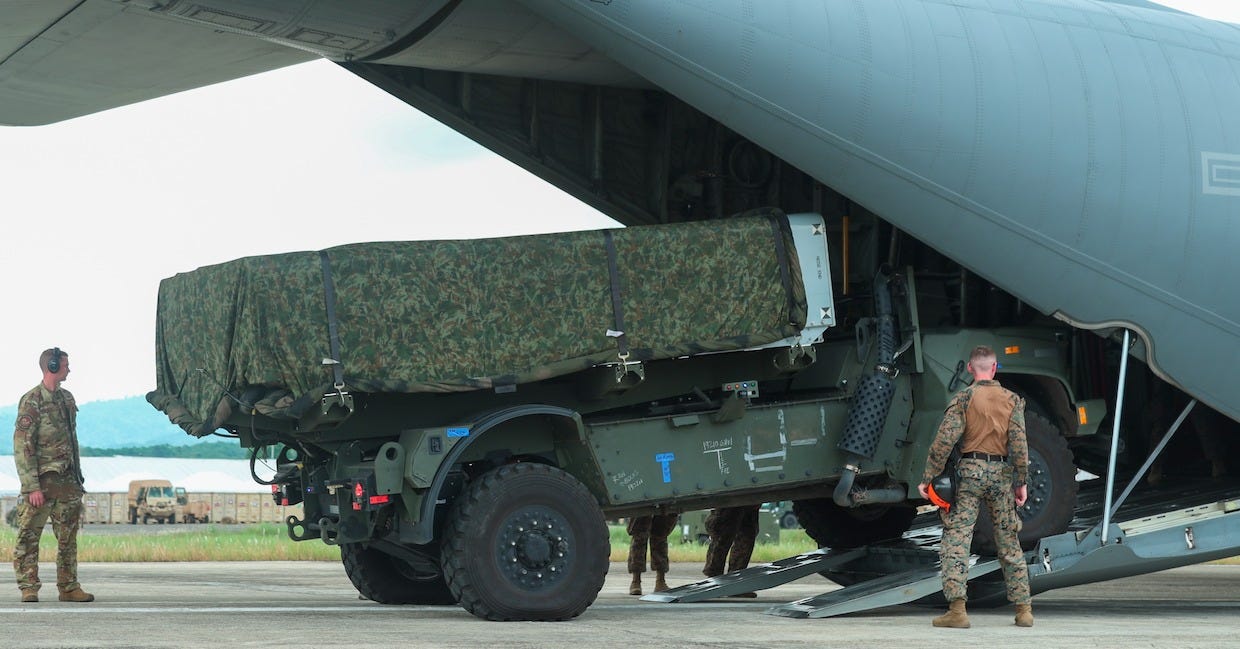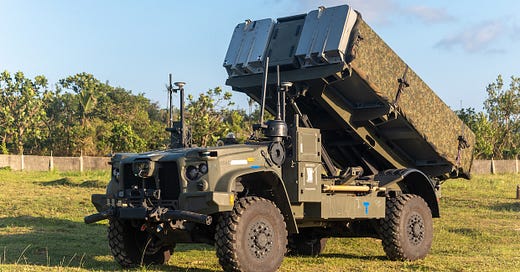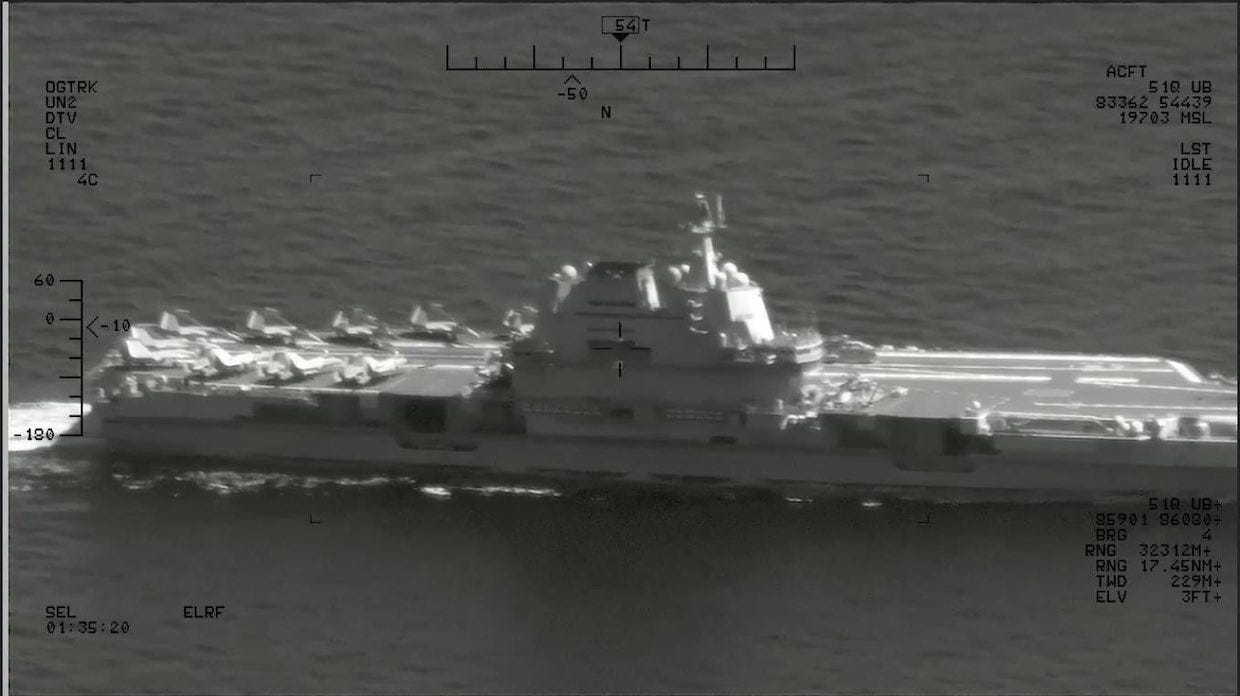US Marines bring new missiles to a hotspot near China
Marines are returning to the Philippines' northernmost islands to practice controlling key sea lanes with a brand-new anti-ship missile.

BANGKOK — US and Philippine troops are getting ready to test their ability to control important sea lanes as part of this year’s Balikatan, the 40th edition of the two countries’ largest annual military exercise.
Much of that training will take place around the Philippines’ northernmost territory in Luzon and the Batanes islands, where US Marines will deploy new weapons, including anti-ship missiles, in the Philippines for the first time.
Those locations overlook the strategically valuable waterway separating the Philippines from Taiwan and connecting the South China Sea to the wider Pacific Ocean. The training done there will be part of a more realistic exercise regimen that US and Philippine officials describe as a “full battle test.”
The size and complexity of Balikatan — which involves 14,000 US and Philippine troops, 200 from Australia, and 56 from first-time participant Japan — is the result of years of work to enhance the exercise. That effort has been driven by growing concern about China, which is deploying its increasingly capable military more frequently and aggressively in the Western Pacific, where it has clashed with the Philippines and challenged the US and its other allies.
Controlling seas, sinking ships
The most notable addition to Balikatan 2025 is the Navy-Marine Expeditionary Ship Interdiction System, or NMESIS, a vehicle-mounted launcher that fires a Naval Strike Missile. With a range of at least 100 nautical miles, Naval Strike Missiles fired from islands north of Luzon could cover most of the sea between the Philippines and Taiwan.
Marine leaders say NMESIS improves their “sea denial capability” and extends their “ability to target and engage from both land and sea.” It is being field by the Corps’ Marine Littoral Regiments, which are designed to go to austere areas on coastlines and islands and to conduct anti-ship, anti-air, and other operations while within range of enemy forces.
The 3rd Marine Littoral Regiment was the first to be activated. With a few weeks of being stood up in early 2022, it shipped out to Balikatan to train with Philippine troops in northern Luzon rather than in the central Philippines where the exercise had previously been held. It has participated in every Balikatan since, its training evolving as the Corps has refined and equipped the unit. The 3rd MLR was also the first to receive the NMESIS, which was delivered in November.
At Balikatan 2024, the 3rd MLR held its first “Maritime Key Terrain Security Operation,” in which it practiced to deploy to and defend the Batanes islands, a few dozen miles south of Taiwan. Manila asked the Marines to expand on that operation this year by bringing NMESIS for the first time. When the weapon’s inaugural deployment was announced in March, the countries said that training with it "will improve interoperability and strengthen deterrence by providing coverage of strategic sea lanes from coastal positions.”
During the exercise this year, US Army and Air Force aircraft will transport NMESIS launchers from northern Luzon to islands in the Batanes chain, where US and Philippine Marines will set up bases for them. On Luzon, a radar operated by other US Marines “will surveil the surrounding airspace” and gather information that will be passed to other Marines for processing into targeting data. That data will be sent to the Marines on the islands, who will use it to simulate strikes on maritime targets.
Another of new weapon will also be tested this year: the Marine Air Defense Integrated System, a vehicle-mounted platform that can identify aerial threats, including small drones, with radar and then target them with electronic jamming, cannon fire, and Stinger missiles. The first MADIS was fielded in December, and Balikatan 2025 is the first time Marines have deployed it outside the US. Marines on Luzon will do live-fire training with it, practicing “to find, fix, track, target, engage, and assess aerial targets” in collaboration with Philippine Marines.
On its own, MADIS provides air defense for friendly forces, but when used alongside NMESIS, it also enables maritime strikes by giving Marines “time to emplace, fire the NMESIS, and displace without fear of being targeted by drones and small unmanned aerial systems,” Col. John Lehane, the 3rd MLR commander, said in a press release.

NMESIS won’t actually be fired at Balikatan, but US and Philippine troops will employ real weapons against a decommissioned Philippine navy patrol craft during a sinking exercise northwest of Manila. It’s only the third live-fire sinking exercise at Balikatan. Like the previous two versions, it’s meant to test participants’ ability to use their naval, air, and land-based weapons and sensors in coordination.
The sink-ex will feature some of the Philippine navy’s new missiles, including its C-Star cruise missile, which debuted at last year’s sink-ex. It’s also another chance for US pilots to take a crack at sinking a warship. A dozen Air Force F-16s are joining Balikatan alongside Marine Corps F/A-18s.
US pilots have been practicing to sink ships for a century, but the Air Force has stepped up that training, a response to China’s development of large, well-defended surface ships. “One of the bigger aspects we will be going to focus on in Balikatan is maritime strike,” an Air Force officer at Balikatan told Stars and Stripes this week.
‘Rehearsal for our defense’

Balikatan reflects a recent trend in US military exercises in the Pacific, which have gotten bigger and more complex. Drills with Japan and the Philippines in particular have expanded and begun to emphasize territorial defense — a focus for those countries, which sit along what’s known as the first island chain and have territorial disputes with China.
Tensions with China over Taiwan, which Beijing claims as its territory, also concern Manila and Tokyo, which worry that their islands and their citizens could come under fire if China tries to seize Taiwan. Earlier this month, Gen. Romeo Brawner, chief of staff of the Philippine armed forces, told troops of Northern Luzon Command to plan “for actions in case there is an invasion of Taiwan” because “inevitably we will be involved” in such a scenario.
In response to those threats, Japan and the Philippines are both reorienting their militaries and modernizing their forces. Japan is shifting from a Cold War-era focus on its north to bolster defenses around its Southwest Islands, including by acquiring long-range missiles and training more with the US on those islands, which include Okinawa. (Another MLR was activated on Okinawa in late 2023.) The Philippine military is turning its focus toward external threats after decades of fighting domestic insurgencies. As part of that, Manila plans to buy billions of dollars in new hardware, such as BrahMos anti-ship missiles, and is training more closely with the US military, which it has granted access to several Philippine bases.
“We are now treating the exercise as a rehearsal for our defense,” Brig. Gen. Michael Logico, Philippine spokesman for Balikatan, said this month, adding that the training areas, from northern Luzon to the South China Sea island of Palawan, were chosen for a reason. Maj. Gen. Francisco Lorenzo, exercise director for the Philippines, said at the opening ceremony that Balikatan “may probably help deter the conflict in Taiwan, but for our concern, it is only for deterrence of any possible coercion or invasion to our country.”
China, which criticizes its neighbors’ exercises with the US as provocative, has increased its own military operations in the area over the past several years, training its forces to operate around Taiwan and to fight through chokepoints between the islands south of Japan and north of the Philippines.
The timing and locations of China’s military operations are also seen as messages. As Balikatan kicked off last week, the Philippine navy tracked several Chinese warships, including the aircraft carrier Shandong, sailing along the Philippine coast, at one point passing just a few miles from islands north of Luzon.
The transit was legal, but a Philippine official said it was the first time Shandong had been sighted so close to the coast. "This was one of the larger or unusual formations we have monitored," Adm. Roy Vincent Trinidad told state media.






